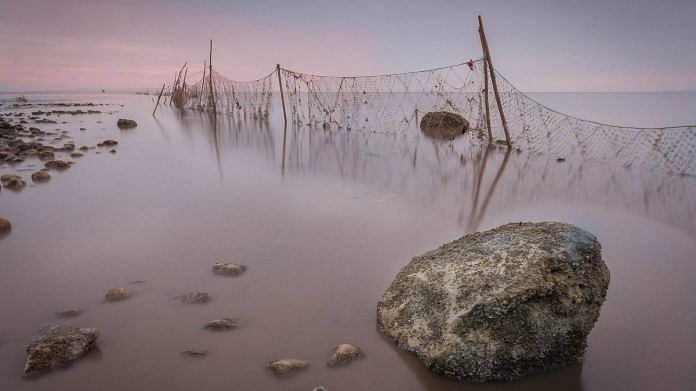The humble fishing net has had an upgrade – and it’s one that’s playing an important role in fisheries management. At sites around the northeast Atlantic, scientists are working with the fishing industry on trials of light and audio technology that are protecting endangered species, preserving food security and safeguarding revenues.
SafetyNet Technologies, based in the UK, has developed LED lighting that clips to fishing gear and can switch between a range of colours and intensities, using behavioural response to light to target specific species.
“By illuminating the net in exactly the right recipe of light, we allow the fisherman to effectively programme their net to attract or repel exactly the species a fisherman wants,” says Aran Dasan, Chief Technology Officer of SafetyNet Technologies, in a video shared by the company.
This saves fishermen time and helps to avoid what’s known as bycatch – other fish or marine life that inadvertently gets caught in nets, including turtles, dolphins and juvenile fish.
It also helps to address the 35% of the global harvest that is lost or wasted every year.
The life aquatic
We have a growing appetite for fish. Between 1990-2018, there was a 122% increase in our consumption of seafood. Billions rely on it as a staple part of their diet, and fishing is the primary source of income for millions of people worldwide.
Fisheries production for both wild and farmed stocks reached a record level in 2018, at 96.4 million tonnes. As demand for fish has risen, the level of sustainable fish stocks has dropped by a third since 1974. There is an urgent need for better fisheries management to ensure the sector remains resilient, says the Food and Agriculture Organizations of the United Nations.
Innovative solutions to the challenge of excess fishing are being explored through UpLink, a platform hosted by the World Economic Forum that is connecting entrepreneurs, experts and investors so that they can scale up those solutions in a way that helps to meet United Nations Sustainable Development Goals (SDG) targets.
One of those goals aims to end overfishing, illegal, unreported and unregulated fishing and destructive fishing practices.
But sometimes, fishermen lack the tools to help improve those practices.
“Most fishermen want to comply with regulations, but currently, their methods of fishing are not selective enough to be able to do so,” says SafetyNet Technologies Chief Operating Officer Nadia Laabs.
Smarter tools, better decisions
The use of smart technology for better fishing outcomes is the focus of a European Union-led initiative, SmartFish H2020 – a multinational collaboration set up to use emerging technology, like AI, machine vision and acoustics, to help fishermen make more informed decisions.
“Fishers typically operate huge structures, like enormous nets, which are underwater where they can’t see them,” Dr Lars Kyllingstad, a scientist at marine research institute SINTEF, told Horizon magazine. “And they try to use these [nets] to catch things that they also can’t see.”
One SmartFish innovation uses hydroacoustic sensors alongside sonar and machine learning technology to track and identify fish swimming in a net beneath the waves. Deeper in the ocean, high-definition underwater cameras can be added to nets that are dragged along the seabed. All of these tools help fishermen to better understand the fish stocks in a given area.
Catch or release?
Similarly, CatchScanner uses machine vision to make 3D images of fish that can be analyzed as they are hauled aboard a vessel, allowing fishing crews to accurately determine species and weight and, if needed, relocate to waters with better and more plentiful supply. A handheld version, CatchSnap, could even be used on mobile phones, enabling smaller vessels to make use of the technology.
The data collected by CatchScanner could also help to stop vessels catching more than the EU quota allows. In 2019, Sweden, the UK, and Ireland all had hauls significantly above the total allowable catch recommended by scientists.
Katharine Rooney is senior writer , Formative Content
This article was originally published at the World Economic Forum.
Also read: WEF brings together 37 initiatives as part of global action plan to promote smart technology



